Bullmastiff vs Cane Corso: Comparing Mastiff Breeds
Being a fan of the Mastiff family is not easy. The sheer size of each Mastiff breed is just too fascinating to be ignored. They are deemed to be fierce, loyal, and striking in appearance. The Bullmastiff and the Cane Corso are two of the excellent dog breeds many potential dog owners are torn apart with. If you’re facing the same dilemma, this article will lay down all of their differences so you can weigh which one fits your lifestyle more.
Table of Contents
Breed Origins
Bullmastiff
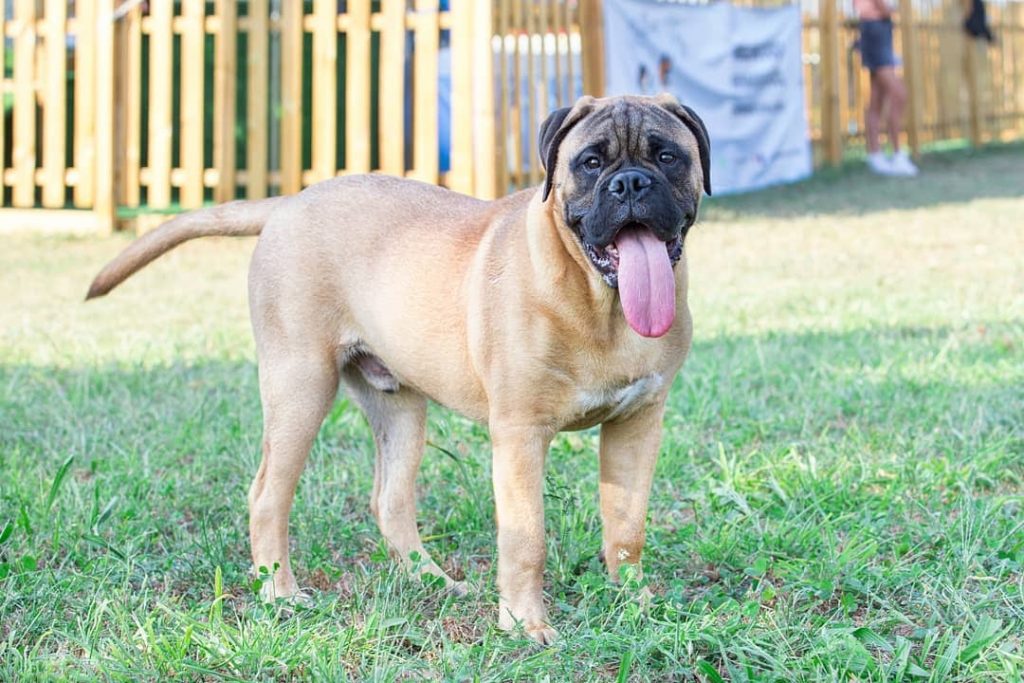

The Bullmastiff is a new dog breed developed in the United Kingdom mainly for the purpose to go after poachers and hold them down by force. It was estimated to be around 1860 when this Mastiff-type dog emerged thanks to the extreme dedication of gamekeepers who underwent several trials and errors before they finally arrived with the perfect mix of breeds.
Tough and aggressive, the Bullmastiff became the Gamekeeper’s Night Dog who will constantly guard around estates and ward off uninvited guests. The dark brindle coat was a popular choice since the shade itself is a natural camouflage if ever they have to scout the grounds at night.
When poaching gradually faded as an activity, the Bullmastiff was found out to be an excellent and dependable guard dog and eventually, a suitable family companion. After a significant period, the black mask of his English Mastiff parent appeared and fawn also became an available breed color.
Cane Corso
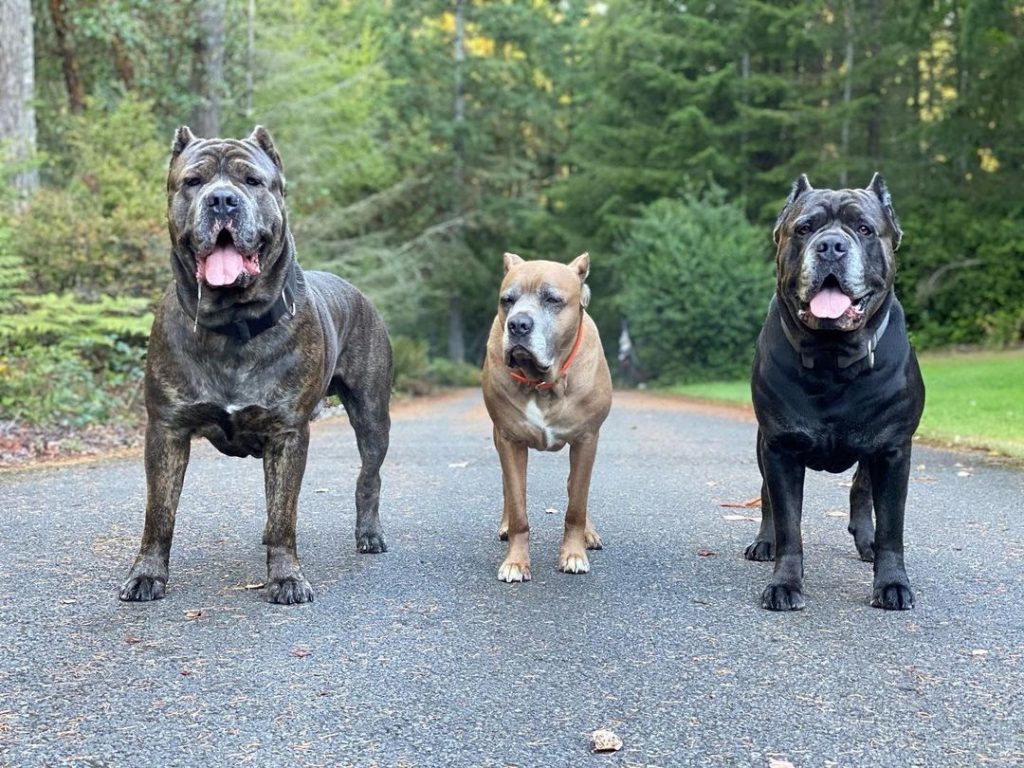

The Cane Corso comes from Italy, and being a Mastiff breed, he is a descendant of the great Roman war dogs, specifically the Molossian Hound. Several arts like the one that dates back to 700 BC depict a dog with a great resemblance with the modern Cane Corso. That alone could tell us that this breed has been around for such a long time already.
When the Roman Empire fell, he had several purposes assisting humans in working on the farm, guarding the herd, estate, or a family, and hunting alongside his fellow human hunters. He almost got extinct when industrialization started and when the two world wars occurred. When the numbers got too low, Dr. Paolo Breber spent his time and attention in creating breeding programs specifically focusing on the Cane Corso breed.
It was recognized in 1993 by the Federation Cynologique Internationale and was, later on, brought to the United States.
Size, Appearance, & Coloring
Bullmastiff
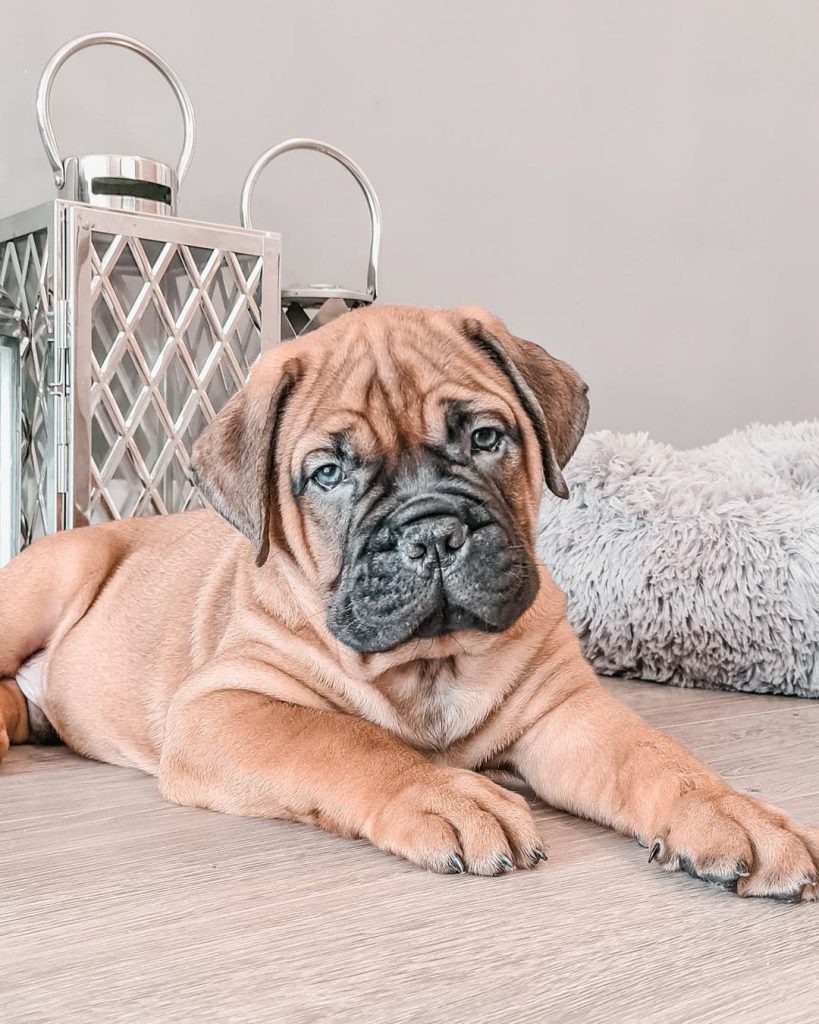

Great in size, power, and even in proportions. The Bullmastiff has an intimidating look worthy of respect. He is considered a large breed of 24-27 inches in height at withers and 100-130 pounds in weight. But, how he came about should be unraveled first. Genetically, he is composed of 60% English Mastiff and 40% Bulldog. That would explain his appearance and mass.
You would notice his bulky look but not because of fat, but rather due to his muscles. His neck is thick and his body is superb in condition. All four legs have an athletic display with massive paws. He typically has an undershot jaw but such a look is both mesmerizing and menacing. His tail tapers and is moderate in length.
So far, the natural colors carried out by this Mastiff breed are only three namely red, fawn, and brindle.
Cane Corso
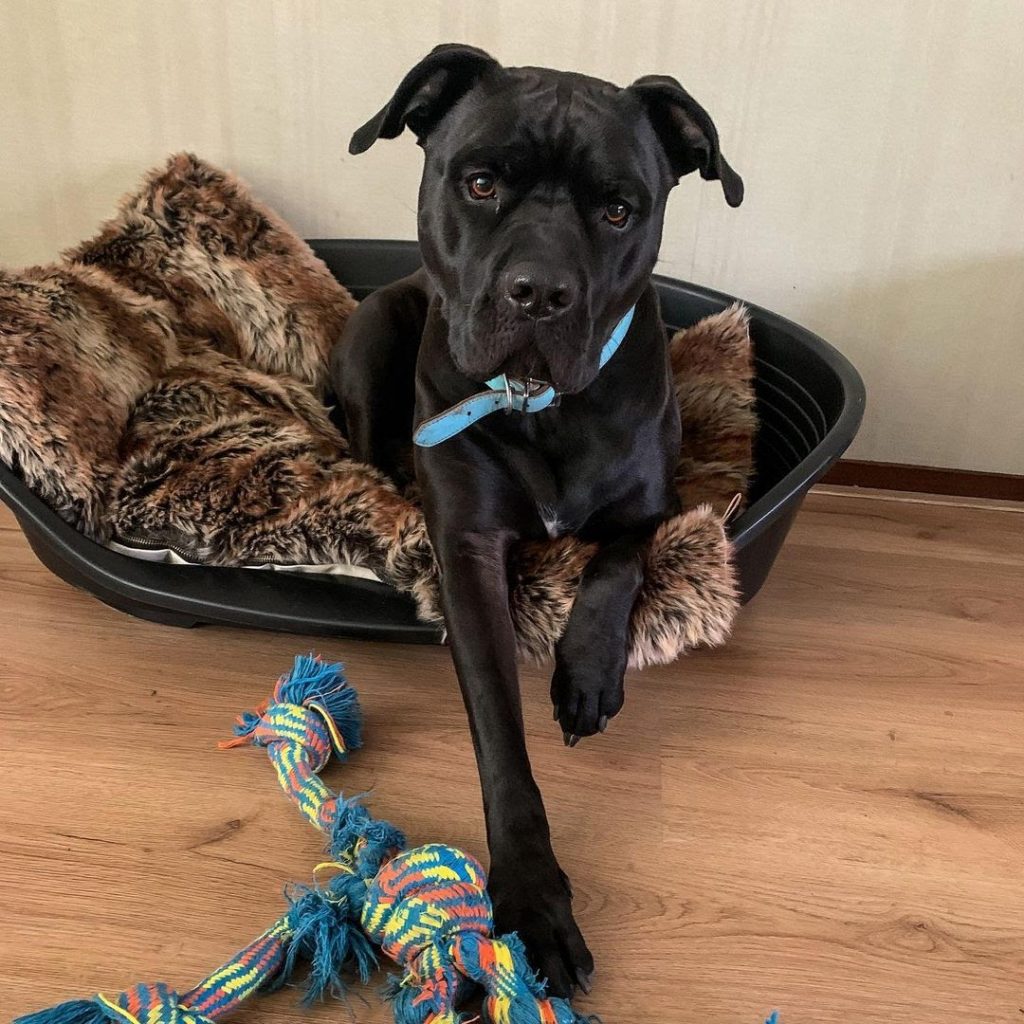

Fierce, strong, and large. Three words that perfectly describe the Italian Mastiff. He has imposing looks enough to make anyone know how to respect boundaries. The Cane Corso is ideally 23.5 to 27.5 inches tall when measured at withers and his weight must be proportionate to his height. He should never look skinny nor fat but rather muscular, fit, and athletic.
He has large and broad shoulders and a deep muzzle with non-prominent jowls. His eyes are almond-shaped, mysterious, and threatening. Often, Cane Corsos have their ears cropped, but such practice is frowned upon. His tail is also often docked, but this is only necessary if he’s a working dog. Nevertheless, this kind of look starts to become part of his identity.
On a different note, the coat is short and coarse and it can be in various colors such as black, red, fawn, grey, chestnut brindle, and black brindle.
Temperament
Bullmastiff
The Bullmastiff is a very dependable and extremely loyal dog. Once he knows that he can trust you or considers your family his own, he will ensure everyone’s safety. Despite his fearsome look, he’ll never deprive his loved ones of his affection. He does nicely with well-behaved older kids but yet again, supervision is still important.
He’s not the most cordial when it comes to other dogs especially those of the same sex. There is what we call same-sex aggression which proves to be dominant in this breed. Early socialization can mellow this nature, but it will not entirely diminish the trait. He’s also very wary toward strangers and that’s something you should never ignore when you own a bullmastiff.
Cane Corso
You can never judge a dog according to its appearance. Sure, his overall look can make anyone scamper, but this breed isn’t something you should forever be afraid of. Establishing a meaningful relationship with him is crucial in raising a Cane Corso. What might surprise anyone is his ability to be gentle and playful around your kids. He’ll protect those he loves no matter what’s at stake for him.
At times, he can be too independent, that’s why he’d need an authoritative owner and someone he’d see as a pack leader. Anyone doubtful of their handling skills toward large breeds won’t do well, especially when training a naturally stubborn dog.
Exercise Needs
Bullmastiff
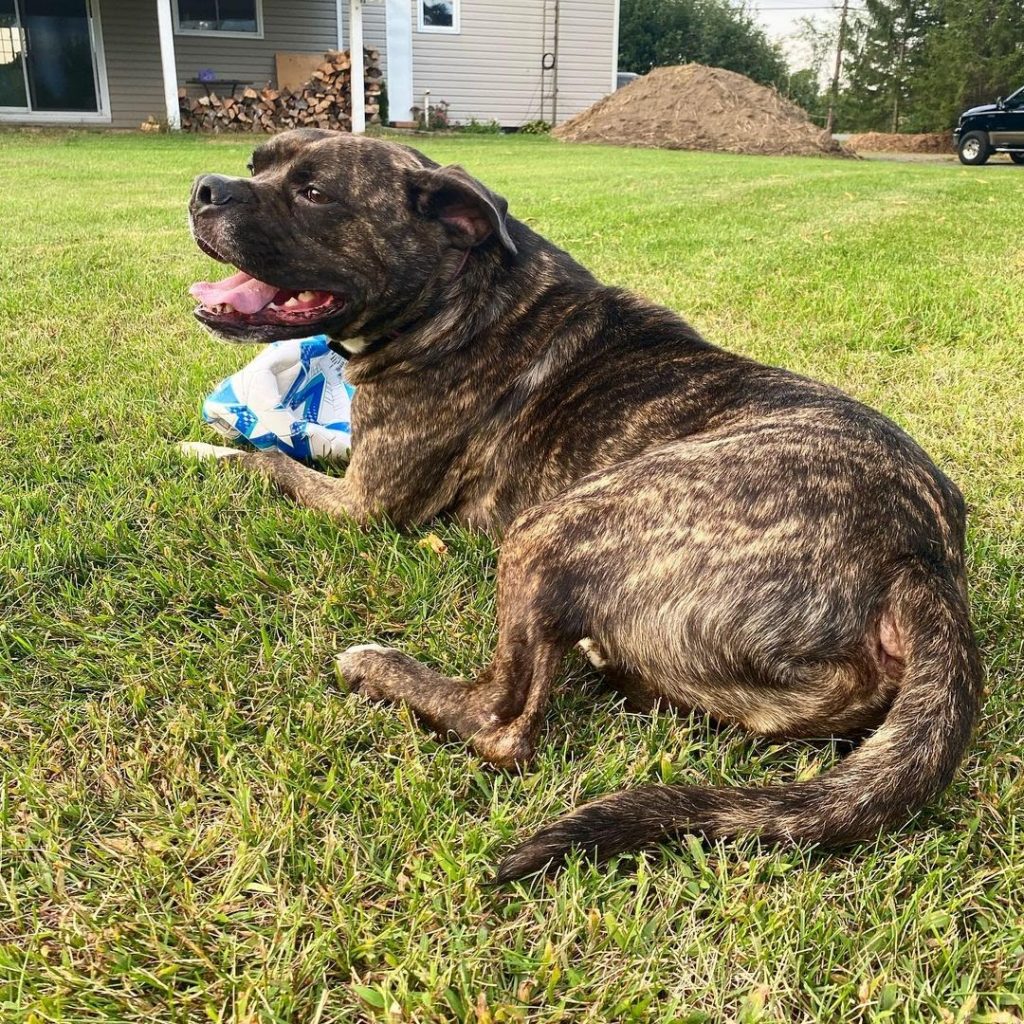

Despite its athletic appearance, the Bullmastiff does not need much exercise. His low levels of energy would only require a couple of long walks each day or a short period to navigate a secured place. From time to time, you can also let him enjoy splashing around in the pool or ultimately teaching him how to swim.
Generally, his daily exercise should be at least 2 hours long. This helps him stay fit and healthy, keeping him away from the possibility of becoming overweight, especially that he’s usually demotivated indoors. He’d need someone who would push him to sweat off regularly instead of lazing off on his comfy couch.
Cane Corso
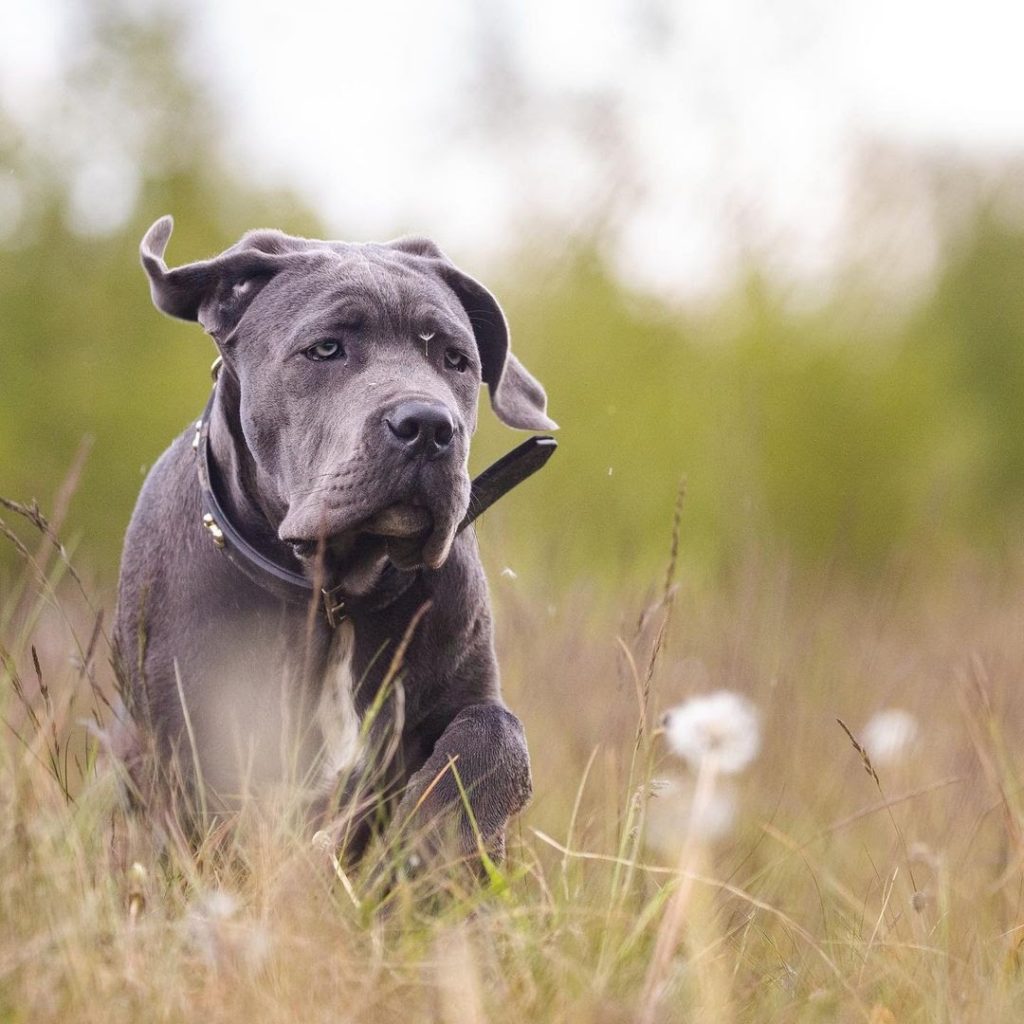

Cane Corsos won’t likely show any bad behaviors when they are physically and mentally stimulated. Since they are intelligent and eager to please, you won’t find it a challenge urging them to go out for a 2-hour exercise. You can simply let them play off-lead in secure areas or walk them around the neighborhood.
Games and outdoor activities will also excite this breed. Not only does steaming off make the canine happy, but it also keeps him away from developing health problems related to immobility and inactivity.
Grooming Requirements
Bullmastiff
Shedding is low for the Bullmastiff breed, yet brushing him daily is still required since dogs let go of dander regularly. Baths can only be done depending on his lifestyle and environment. If he constantly dips himself in muddy ponds, then a wash is necessary. If he likes to stay clean, you can schedule him for it every 6-8 weeks.
Other important check-ups must be done as well such as trimming the nails, brushing the teeth, and cleaning the ears.
Cane Corso
Thanks to his coat type, the Cane Corso is also a light shedder. You don’t have to overwhelm yourself with the daily task of brushing since you can just do it when necessary, especially during the shedding period. You can also just wash him when he’s dirty or if his body gives off an unpleasant smell. His ears, nails, teeth, and anal glands should all be clean which you can do on your own or by bringing him to a local pet salon.
Health Problems
Bullmastiff
The Bullmastiff’s health largely depends on his genes, diet, and lifestyle. Unfortunately, no matter how careful we are, some diseases may persistently show. Some of these include:
- Lymphosarcoma
- Mast cell tumors
- Gastric torsion
- Bone issues
Cane Corso
The Cane Corso is a generally healthy breed. However, the breed remains susceptible to various medical complications since no dog is perfectly healthy. Owners should be wary about the following:
- Idiopathic epilepsy
- Eyelid abnormalities
- Demodex mange
- Bloat
Breed Popularity
The American Kennel Club’s breed popularity ranking currently puts the following breeds in their respective standings out of 200 dog breeds:
Bullmastiff: 51st
Cane Corso: 32nd
Which Mastiff Should I Get?
To help you decide, you should assess the kind of lifestyle you have which is suitable for a certain breed. Both dogs are low-maintenance but there is a striking difference in temperament, appearance, and health needs. You can create a checklist for both Mastiff breeds and the one that has more boxes ticked might just be your perfect future companion!
